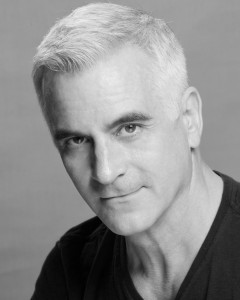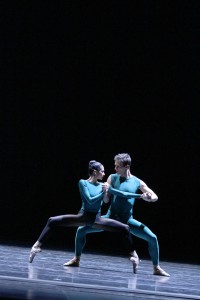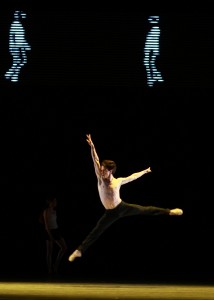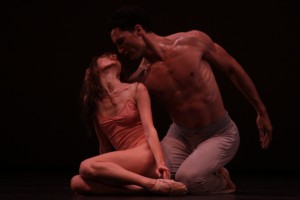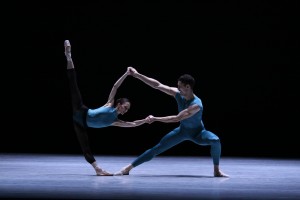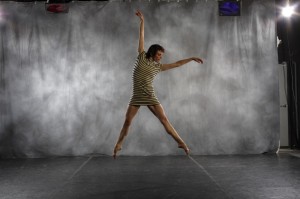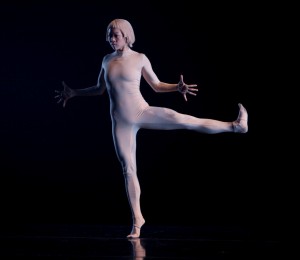In a word: brilliant. The dancers, the dancing, the choreography, the curation – all of it. Hubbard Street Dance Chicago‘s (HSDC) Summer Series opened last night at the Harris Theater with a three-work program that solidified the company as an elite group of dancers at the top of their field. Breaking new ground as the first U.S. company to perform William Forsythe’s Quintett, HSDC proved (again) they have the chops to tackle anything. HSDC resident choreographer Alejandro Cerrudo’s cross-company collaboration with HSDC and Nederlands Dans Theatre Malditos and Batsheva Dance Company artistic director Ohad Naharin’s 2011 mash-up of previous works THREE TO MAX bookended Forysythe’s piece for a full, lush, well-rounded evening.
Malditos is a study in shadows. Dark lighting is a tool Cerrudo uses often, but never with as great effect as in this work. The dancers slip in and out of the darkness like ghosts appearing and disappearing at the edges of your mind. The score from the film The Beat That My Heart Skipped by Alexandre Desplat beautifully compliments his choreography. The end, where an almost naked Ana Lopez dances duets with three interchangeable men, is breathtaking. The dancing continues as the lights fade out and back in as a different partner joins her. Each partner touches her with the top of his head, but she reacts differently to each touch eventually taking over and touching one back with her head before they melt to the ground together as the lights fade. The duets throughout are stunning displays of love and trust studded with architectural partnering and razor-like technique. Cerrudo holds his own next to master choreographers Forsythe and Naharin.
The performance of Quintett was transformational. What these five dancers (Meredith Dincolo, Penny Saunders, Jonathan Fredrickson, Jesse Bechard and Kevin Shannon) created on stage was extraordinary. They are always good, but this was something truly special. A looped score of a homeless man singing “Jesus’ Blood Never Failed Me Yet” created a base canvas for the movement to take life. The repetition let you focus on the relationship of the five characters. Simple ballet moves like a tendu devant or a double pirouette seemed to take on new meaning. The piece was created in 1993 in collaboration with five of Forsythe’s dancers. Three of the original cast – Dana Caspersen, Stephen Galloway and Thomas McManus – worked with the HSDC dancers to set the work over the past few weeks. The connection, emotion and energy of the dancers was palpable. Bechard, a strong presence in all three pieces on the program, at times simply defied gravity. One quiet moment as Saunders rested her head on Bechard’s back for a couple of seconds let the audience catch their breath before being sucked back in to the wonderful whirlwind happening on stage.
Naharin’s piece has the dancers clad in simple jeans and colorful tank and tees. Dressed as civilians, the dancers seemed stripped down to their bare essence. They were open, honest, subtle, sensual, vulnerable. Human. The rich movement sections captured their talents and personalities. At one point a dancer looks at his hands and then extends them to the audience, giving us what’s there as if saying “here, this is who I am”. The counting section (where the dancers ascribe a movement to a number as a voice counts to ten, adding new movements each time the counting starts over) and a partially improvised follow-the-leader sections are stand outs.
Three shows remain in the Summer Series. I highly recommend it.
For ticket information: hubbardstreet.com, call 312.850.9744 or visit the Harris Theater box office at 205 E. Randolph.

